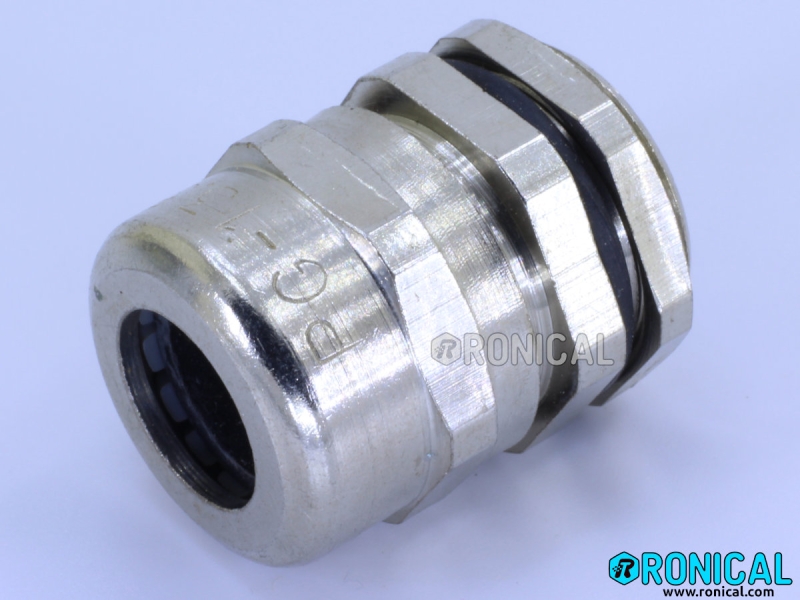PG13.5 Cable Gland Metal
Dispatched same day if ordered before 1:00 PM (Excluding Sunday & National holidays), then courier normally takes 2-4 days.
Specifications
| P.Code | Material | Cable Range mm |
Panel Hole mm |
Overall Length mm |
|---|---|---|---|---|
| 15464 | Brass | 9-12 | 20 | 32 |
| 15465 | Brass | 11-14 | 23 | 33 |
Cable glands are defined as ‘mechanical cable entry devices’ which are used in conjunction with cable and wiring for electrical, instrumentation & control, and automation systems, including lighting, power, data and telecom.

The main function of the cable gland is to be a sealing device which acts to ensure the protection of enclosures on electrical equipment, including by rendering safe different aspects.
Cable glands provide additional levels of sealing where there is a need for high protection.
The main functions of the Cable Gland are to act as a sealing and terminating device to ensure the protection of electrical equipment and enclosures, including the provision of:
- Environmental protection – by sealing on the outer cable sheath, excluding dust and moisture from the electrical or instrument enclosure.
- Earth continuity – in the case of armoured cables, when the cable gland has a metallic construction. In this case cable glands may be tested to ensure that they can withstand an appropriate peak short circuit fault current.
- Holding force – on the cable to ensure adequate levels of mechanical cable ‘pull out’ resistance.
- Additional sealing – on the part of the cable entering the enclosure, when a high degree of ingress protection is required.
- Additional environmental sealing – at the cable entry point, maintaining the ingress protection rating of the enclosure with the selection of applicable accessories dedicated to performing this function.


